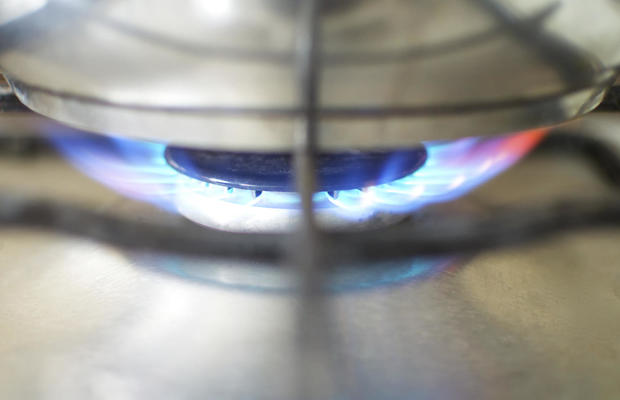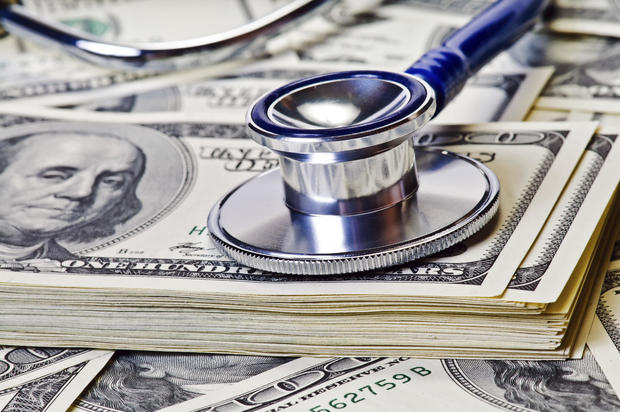A decade of changing prices for 11 basic goods and services
Unlike a generation ago, it's not always easy at first glance to tell Americans who are struggling financially from those who are thriving.
Consumer goods that in 2006 were within reach of only middle-class and wealthy Americans are now cheap enough for lower-income families to afford. Computers, flat-screen TVs and other devices and appliances have plummeted in price over the last decade, according to data from the Bureau of Labor Statistics.
At the same time, services that are increasingly essential to securing a middle- or upper-class foothold, such as a college education, have surged at a much faster pace than inflation.
The result is an American society where the poor may not look impoverished, given an abundance of cheaper consumer goods. Yet many have little hope of achieving economic mobility in the face of sharply higher costs for education and health care.
"It seems like a cruel irony at best that most of the stuff that isn't dropping in price is the important stuff," said Josh Bivens, research and policy director of the Economic Policy Institute, a left-leaning economic think tank. "In this overall discussion, you do worry that people will put too much moral freight that if someone has a flat screen TV, that they can't be really poor."
On the other hand, Bivens noted that lower costs for things like refrigerators and TVs free up more cash for households to spend on other parts of their budgets. The sharp decrease in the price of consumer goods is "one of the few good news stories of our economy," he added.
Yet even with drastically lower prices for some household goods, many Americans face headwinds. Median household income may have jumped 5.2 percent last year, but it's still below the 1999 peak for many.
Younger workers are at risk of a lower standard of living than their parents, the consulting firm McKinsey said in a report earlier this year. It estimated that as many as 70 percent of households in 25 developed countries had seen flat or falling wages during the past decade, compared with fewer than 2 percent of households between 1993 to 2005.
Read on to learn more about how basic costs have changed since 2006 relative to an 18 percent increase in the Consumer Price Index.
Apparel: Down 9 percent
Fashion may go in and out of style, but the past decade has buttoned up lower prices for apparel.
Its costs have declined 9 percent since 2006, according to data from the Bureau of Labor Statistics. Middle-income and lower-income households are spending between 2 percent to 3 percent less on clothing than they did in 1984, according to a Hamilton Project's analysis of Census data.
As with many of the consumer goods that have dropped in price, manufacturing has largely shifted to other countries where labor is cheaper. Between 1990 to 2011, the number of jobs in the apparel industry has declined by more than 80 percent, the BLS notes.
Food at home: Up 4.5 percent
Bringing home the bacon isn't as cheap as it was before the recession. In the last decade, the cost of buying food at grocery stores has increased by 4.5 percent.
Yet Americans are getting some breaks. The cost of eggs, dairy and meat have declined in the past year, with egg prices slipping almost 14 percent as producers recovered from the avian influenza.
Still, for the poorest Americans, higher costs at the grocery store are pressuring their budgets. Those in the lowest income quintile spent 34.1 percent of their income on food in 2014, compared with 32 percent in 2006, according to the Department of Agriculture.
Shelter: Up 4.2 percent
Putting a roof over one's head also isn't as affordable as it was before the recession. Shelter, or the cost of rent and what a homeowner would pay in equivalent rent for their home, has increased 4.5 percent.
Rents and homeownership costs have risen sharply in many areas of the country. Poor Americans are increasingly strained by rising rents, with low income households spending 5.5 percent more of their budgets on housing than they did in 1984, according to the Hamilton Project.
Demand for low-cost rentals is exceeding the country's supply. More than one-third of U.S. households are paying more than the 30 percent of income on housing, which is considered a burden according to Harvard's Joint Center for Housing Centers.
Household fuel: Down 9.2 percent
Staying warm this winter will be cheaper on a relative basis than it was a decade ago. The cost of household fuel has declined 9.2 percent since 2006.
A natural gas glut has helped depress the cost of heating America's homes. Indeed, Scientific American declared that the "age of cheap oil and natural gas is just beginning." That's good news for Americans, given the higher costs they're shelling out for food, education and health care.
Medical care: Up 16.5 percent
Staying healthy is a pricey endeavor in the U.S. The cost of medical care has increased by 16.5 percent since 2006. Americans are spending more out of pocket on doctor's visits, insurance premiums and medicine than they did a decade ago.
About 11.2 million Americans were pushed into poverty last year because of medical costs, according to the Census Bureau. About 20 percent of people younger than 65 years who have health insurance said they had trouble paying their medical bills in the last year, according to a New York Times and Kaiser Family Foundation poll.
College tuition and fees: Up 35 percent
A college degree remains valuable, but the surging price of tuition is leading to tough decisions -- and rising student loan debt -- for American households. The cost of college tuition and fees has leaped 35 percent since 2006.
Yet a college degree is increasingly important to climbing into and staying in the middle class. College graduates not only earn more over their lifetimes than Americans with only high school degrees, but they're securing the bulk of "good" jobs in the post-recession economy.
About three-quarters of the 11.6 million jobs created after the recession went to college grads, while less-educated Americans were pushed into lower-paying jobs, a Georgetown University study found earlier this year.
Child care and nursery school: Up 16.7 percent
American families know the economic pain of paying for child care and nursery school. The cost has increased 16.7 percent since 2006.
Child care today costs more than college tuition in 33 states and the District of Columbia, the EPI found last year. Many families turn to a network of relatives and friends to help them provide care for their children. Or they even turn to staggered work shifts so that one adult can be at home with the kids. And some parents quit their jobs to stay at home because they can't afford child care.
Unfortunately, leaving the workforce to take care of a child can have negative life-long economic consequences, from lost wage growth to lower retirement savings.
Personal computers: Down 71 percent
This is probably the best time ever to buy a personal computer, whose costs have dwindled by 71 percent since 2006.
Even Apple's (AAPL) computers cost less than they once did, despite the company's reputation for pricey equipment. The introductory price of the first Apple was about $1,300 in 1977, or about $5,200 in today's dollars. Apple now sells its computers for a fraction of that cost, while competitors are selling PCs for only a few hundred dollars.
TV sets: Down 90 percent
TV prices have plunged since 2006. While flat-screen sets were expensive when they first came out, their prices declined sharply in the late 2000s and early 2010s as the market became saturated.
That has made TV sets ubiquitous in American households, regardless of income. About 98 percent of homes had at least one TV set in 2010, according to the Census Bureau.
New vehicles: Down 9 percent
The price of a new car has increased less than the rate of inflation, which means Americans are paying fewer real dollars today for a new car than they were in 2006.
That doesn't make cars cheap, however. Stagnant wages mean many American workers are having trouble affording new cars, Bankrate.com said earlier this year. It found the median income household in the largest 50 U.S. cities couldn't afford the typical new car or light truck, which have an average cost of about $34,000.
Gasoline: Down 21 percent
Another bright spot for American households is the decline in gasoline prices, which have dropped 21 percent since 2006.
Last year, the typical middle-class household saved almost $500 because of lower gas prices, or about 1 percent of their annual income, JPMorgan Chase (JPM) said in a July report. Americans spent their savings back at the pump, as well as at restaurants and stores, the report found.










